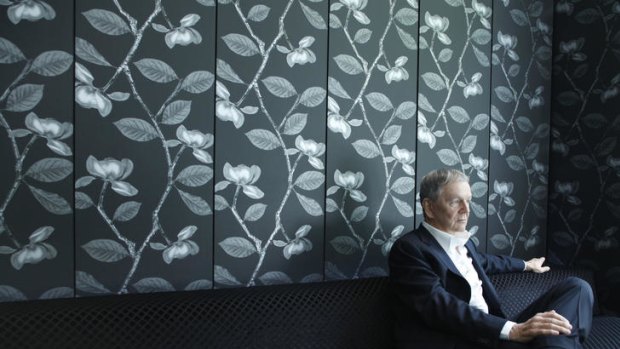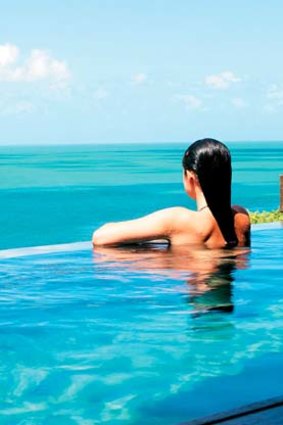
Geoff Dixon says Australia needs to face up to the fact that it is now a high-cost destination.
The chairman of Tourism Australia, Geoff Dixon, reckons we should stop whingeing about the fact that Australia has become such an expensive place to visit for foreign tourists and locals alike.
“We have to face it, Australia is now a high-cost destination,” the former Qantas chief executive told the Australian Financial Review a fortnight ago. “We can talk about it, we can wring our hands, but to spend too much time complaining about the currency is self-defeating.
“What we need to do is spend our time on how we market the country better and make sure that the product is worth what people pay for it."
Dixon and Tourism Australia chief executive Andrew McEvoy are spearheading a mission to lift the overall standard of the hospitality industry by attracting investment in luxury accommodation projects ranging from 500-room, five-star hotels in capital cities to new outback resorts. TA has set a target of doubling tourist spending in Australia from $70 billion a year to $140 billion by 2020.
But most of this effort is targeted at the growing foreign inbound market, especially from Asia, not domestic visitors who account for up to 80 per cent of the industry.
According to the Australian Financial Review, new or renovated Australian resorts such as Qualia and Hayman Island in the Whitsundays may tick all the boxes when it comes to what Tourism Australia is trying to drive, but with luxury rooms costing well over $1000 a night they compare unfavourably on price to what can be found in Indonesia, Thailand and a growing list of other Asian destinations.

Hamilton Island's luxury Qualia resort ticks all the boxes Tourism Australia is pushing for.
In fact the high cost of the local product is one of the key reasons driving Australians overseas for holidays.
"It makes domestic tourism much more difficult, no doubt about that, because it is so, so attractive to go offshore now,” Dixon says. “We haven't had a currency like this for a long, long time. I'm not sure there's much more we can do about that except make our product in Australia as attractive as we possibly can. I don't know if that means margin retraction (lower room rates), but that may be the only thing you can do.”
Annual Chinese tourist arrivals have jumped from 156,000 10 years ago to 536,000 last year, with the growth rate showing no signs of slowing and set to pass 600,000 this year. Tourism Australia says Chinese spending has risen by an average 18 per cent annually since 2000 to make them our most valuable foreign tourism market, even though other markets are bigger numerically.
"This new wave of tourists (from Asia) want the unique outdoors and natural experience, but they also want top-notch shopping, restaurants, hotels and, yes, gambling and they want all of those things in one place," Dixon says.
Derided by some in the industry as wishful thinking because of Australia's lacklustre tourism growth in the past decade, Tourism Australia’s plan calls for 50,000 new beds - from three-star inner-city accommodation hotels to remote luxury resorts and five-star hotels.
While Sydney and Melbourne need more New York and London-style boutique hotels, Brisbane and Perth stand out as in “dire need” of large-scale five-star developments, says the AFR.
Dixon says Australia might be expensive and we have an undersupply of luxury rooms, but at least we're starting from out in front. "Australia is almost the No. 1 next place to go for everybody in the world," he says.
"We've always suffered from the tyranny of distance, that will always be the case. But we also know Australia is only becoming more attractive in the world. Our job is to not stuff that up."
The question in my mind is whether, in its enthusiasm for numbers with “billion” in them, Tourism Australia is actively helping to price Australians out of the market for local holidays.
In my opinion, there needs to be far greater emphasis on reducing the cost of holidaying at home. In a high-cost country with high wages, that means looking at business models like the one Tune Hotels (created by AirAsia founder Tony Fernandes) is bringing to Australia, where the bricks-and-mortar hotels and resorts are brand-new, but guests aren’t being lumbered with expensive and unnecessary services.
The Tune model is the low-cost airline of the accommodation industry. That’s the way you achieve the necessary profitability without “margin retraction”. In one of the dearest countries on earth, higher prices will succeed only in shrinking the hotel industry and alienating its biggest group of customers, the locals.
Instead of dreaming about mountains of five-star gold, I would like to see Tourism Australia putting much more effort into matching supply to the real demand, especially in key regional destinations. Then we can talk about Australia’s major attitude problem with service and the need for proper training of people to work in hospitality.
What do you think? Post a comment below to provide your feedback for the chairman of Tourism Australia.
Sign up for the Traveller Deals newsletter
Get exclusive travel deals delivered straight to your inbox. Sign up now.